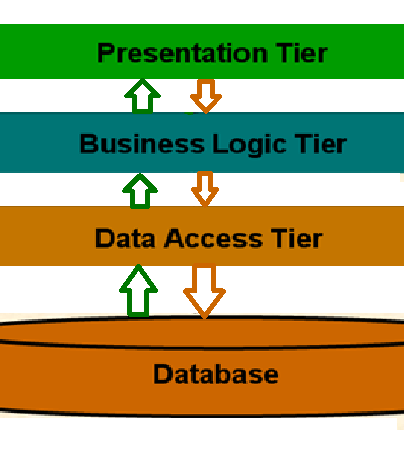Asp.net page Directives
Asp.net Page Directive(Directives and Page Properties)in Asp.net:
In Asp.net the page directives is a work as instructions to
specify the optional setting.
Registering a page language and custom control. These are setting using how in Asp.net web
page (.aspx) and user control (.ascx) pages in .net frame work.
The Syntax use a page directivein asp.net is:-
<%@ directive {attribute=value} * %>
Page directives are started with the @page directive (for a
page).
Some directives in asp.net are there is:
- @Page
- @Control
- @Import
- @Implements
- @Register
- @Assembly
- @Master
- @PreviousPage Type
- @MasterType
- @OutputCache
- @Reference
Here we explain one by one.
 |
| Directives |
Other page directive Related Questions :
- What is the page directive in asp.net.
- Asp net page directive validate request.
- Inherits in page directive asp net.
- Asp net master page directive.
- Asp net enable session state page directive.
- Previous page directive in asp net.
The @Page Directive:
It defines the page specific attributes using by .net page
parser and Compiler.
Syntax: - <%@ Page attribute=”value” [
attribute=”value”……] %>
The @Control Directive:
It is Defines the control specific attributes by .net page
parser and Compiler. It is used only in aspx files.
Syntax: - <%@ Control attribute=”value” [
attribute=”value”……] %>
The @Import Directive:
It is defines that explicitly imports a namespace into .net
application. Web page, master page user control page and the global.aspx file.
Syntax: - <%@ Import namespace=”value” %>
The @Implements Directive:
It indicates that web page, master page and User control
page must be implement .net interface.
Syntax: - <%@ Implements interface=”validInterfaceName”
%>
The @Register Directive:
It is creates an association of two tag prefix and custom
control in .net web pages.
Syntax: -
<%@ Register tagprefix =”tagprefix”
namespace=”namespace” assembly=”assembly” %>
The @Assembly Directive:
The Assembly is providing links to the .net applications
files such as master page, user control and Global.aspx and Web Page. It is
also help in creating all interfaces and classes.
Syntax: -
<%@ Assembly Name=”assemblyname” %>
<@%Assembly Src=”pathname” %>
The @Master Directive:
It is defines the attribute of a master page (.master file).
Syntax: - <%@Master attribute=”value” [
attribute=”value”……] %>
The @PreviousPageType Directive:
Its provides the strong typing against the previous page.
Syntax: - <%@ PreviousPageType attribute=”value” [
attribute=”value”……] %>
The @MasterType Directive:
It provides the reference to the asp.net master page and
accessed the master page property.
Syntax: - <%@
MasterType attribute=”value” [ attribute=”value”……] %>
The @OutputCache Directive:
It is a controls output of caching policies of web page..
Syntax: - <%@ OutputCache Duration=”#ofseconds” Location=”Any|client|Downstream|server|None|ServerAndClient”
Shared=True | False” %>
The @Reference Directive:
It provides the user control and web page file at the
virtual path.
Syntax: -
<%@ Reference Page =”path to .aspx page” Control=”path to .ascx file” VirtualPath=”path to file” %>
Asp.net Related Other Post:
- Use of View State in Asp.net , Post Back data Processing
- Use of Ajax controls, How to create Cookies With Example
- Windows communication foundation: -
- Example of Crystal report(Crystal_report_in asp.net programming )
- how to bind a Grid View
- What is ASP.NET FRAMEWORK PART 1 Programming
- What is ASP.net Programming Part 2,
- SQL Helper Class, Example of how to add captcha in Asp.net using C#
- Sql Query for asp.net Programming , How to create graph in asp.net:
- How to create Line chart:
- How to Make Data Table By C# code :
- How to Print Div by javaScript
- How to Calculate Number of Sunday in a particular month by asp.net programming
- How to Make a HTML Table by C# code
- how to get Asp.net the First Sunday of the Given Month
- How to calculate first date and last date of month
- Display selected Date from data base into asp.net calendar
- how to use CAPTCHA in asp.net,How to use Asp.net regular expression
- How to find Repetitions of character in to given String
- In Asp.net How to upload Image In to server
- Data base connection in asp.net in web application
- ASP.NET Web API In asp.net Programming
- fill data into Dropdown list by using Jquery
- How to Achieve Many Selection in Drop Down List
- Create data Table Dynamically and bind to Drop down List in asp.net



Comments
Post a Comment